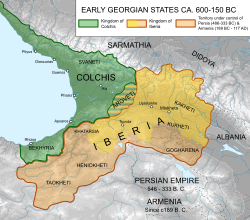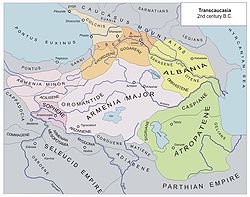This article needs additional citations for verification .(September 2019) |

The Gugars were a people of Caucasian Iberia, settling near the Debeda river, mentioned by Strabo.
They were presumably an early Georgian (Kartvelian) people (Georgian: გუგარები, gugarebi).The toponym Gogarene, an integral part of Caucasian Iberia, is derived from their name. The region is first mentioned by Strabo who records it as a province of Iberia. Later it was renamed Gugark, after the conquests of Arshakid Armenian rulers in the 2nd century BC. [1] [2]
